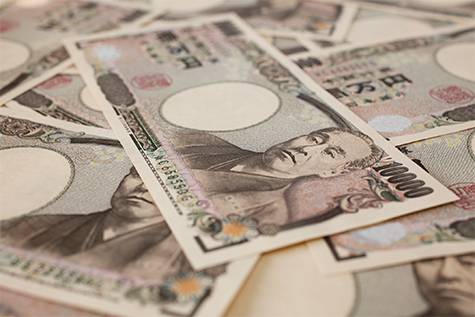• The Dollar is the Best Safe-Haven Investment Amid Global Geopolitical Tensions
• Doubts Surround Japan’s Interest Rate Hike in July
The Japanese yen declined in the Asian market on Monday against a basket of major and minor currencies, deepening its losses for the third consecutive day against the U.S. dollar and recording its lowest level in six weeks. Expectations point to further declines toward the 148 yen per dollar level.
This drop comes as investors focus on buying the U.S. dollar as the best alternative investment amid escalating global geopolitical tensions, particularly following U.S. airstrikes on Iran’s nuclear sites.
Last week’s cautious meeting by the Bank of Japan led to a decline in expectations for monetary policy normalization and an interest rate hike in July, as markets await more economic data on inflation, wages, and unemployment in the world’s third-largest economy.
Price Overview
USD/JPY today: The dollar rose against the yen by approximately 0.5% to ¥146.76 — the highest since May 15 — from Friday’s closing price of ¥146.06, with a low of ¥146.10 during today’s session.
The yen lost 0.4% against the dollar at Friday’s settlement, marking its second daily loss in a row, amid escalating military confrontations between Israel and Iran.
Last week, the yen lost 1.4% against the dollar, recording its third weekly loss in a month due to increased safe-haven buying of the U.S. dollar and fading expectations of a Japanese rate hike.
U.S. Airstrikes
Over the weekend, the United States carried out air and missile strikes targeting three key Iranian nuclear facilities (Fordow, Natanz, and Isfahan). The operation involved more than 125 U.S. military aircraft, including seven B-2 Spirit stealth bombers.
The stealth bombers dropped 30,000-pound bunker-busting bombs on the Fordow site — the most fortified facility, buried 80–90 meters deep beneath the Zagros Mountains. Additionally, U.S. submarines launched 30 Tomahawk missiles at targets in Natanz and Isfahan.
The U.S. strikes came just days after Israeli attacks on Iran that began on June 13, targeting nuclear and military installations. These attacks provoked Iranian retaliation with missiles and drones launched toward Israel.
The U.S. President indicated that the strikes aimed to weaken Tehran’s nuclear program. In a speech on the Truth Social platform, Trump called on Iran to “make peace” and warned of further strikes if U.S. bases and interests in the Middle East are targeted.
Satellite imagery showed six large craters from bunker-busting bombs at the Fordow nuclear site, with scattered concrete rubble indicating severe damage — though the facility was not completely destroyed.
At Natanz — Iran’s largest uranium enrichment facility — previously damaged by Israeli strikes on June 13, the U.S. attacks targeted underground enrichment halls. Two new craters were visible in satellite photos.
In Isfahan, which houses a uranium conversion facility, Tomahawk missiles targeted above-ground buildings, with reports of six additional structures destroyed.
Iran condemned the U.S. strikes as a “brutal violation of international law” and vowed “harsh” retaliation through Foreign Minister Abbas Araghchi. The Iranian parliament approved the closure of the Strait of Hormuz. Meanwhile, the Iranian Revolutionary Guard launched ballistic missiles at Israel, hitting Tel Aviv and Haifa.
U.S. Dollar
The U.S. Dollar Index jumped 0.4% on Monday, reaching a two-week high of 99.16 points, reflecting strength in the dollar against a basket of major and minor currencies.
This rise comes amid aggressive dollar buying as a safe-haven investment, while markets await Iran’s response to the American strikes on its nuclear sites, which have intensified geopolitical tensions in the Middle East.
Opinions and Analysis
Carol Kong, a currency strategist at the Commonwealth Bank of Australia, stated that markets are in a state of anticipation regarding Iran’s response, with heightened concerns about the inflationary impact of the conflict outweighing potential negative economic effects.
Charu Chanana, Chief Investment Strategist at Saxo, noted that markets currently view the U.S. strikes on Iran as a contained event rather than the beginning of a broader war.
Japanese Interest Rates
The pricing of a potential 25 basis point rate hike by the Bank of Japan at the July meeting remains below 40%.
Investors await further data on inflation, unemployment, and wages in Japan before reassessing those expectations.


